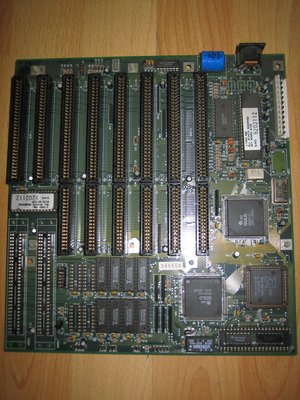First post, by keropi
- Rank
- l33t++
Hiya!
a friend donated me this 286/16 mobo, a SNB-M008 (on the back it is marked as an "YFL010991 rev.2.0" board) ... needless to say I can't find any info on it... 😕

direct link: http://i125.photobucket.com/albums/p55/restqp … zps4d07b3a9.jpg
I have some questions:
a. I need to use SIPP memory in pairs, correct?
b. what do you put in the 4 sockets marked as group A ? they have fewer pins than those next to them
c. do I need to fill all 8 sockets with DRAM chips in group B so the board boots? I tried with only 4 that I had available but I was getting 3xBeeps on boot and nothing more...
The plan is to solder pins on some 1MB 30pin SIMMS I have and use them, but I would like to at least know if the board is OK before I solder on the SIMMS... plus any info on that board is welcome! Maybe it's not a good one and not worth any trouble 😒
TIA!




